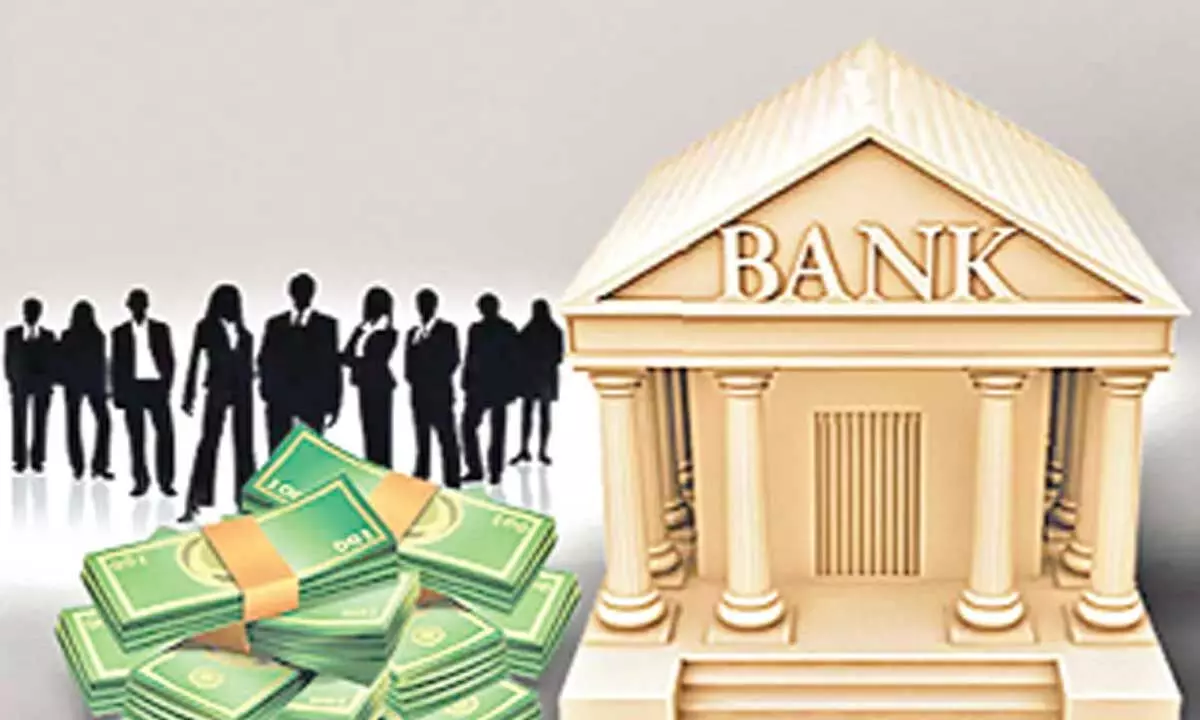PSB credit continues to crowd in credit growth from private banks
Segment-wise, the jump in credit to MSMEs and infrastructure was strong at Rs 2.3 trillion while credit to housing and NBFC sector was close to Rs 2 trillion
image for illustrative purpose

The latest trends indicate that PSBs have been continuously chipping away on the back of a robust asset quality and also some of the credit initiatives that were launched during pandemic. This healthy competition could bring in new rules of the game as we move towards the rebuilding phase post pandemic
Mumbai: In an interesting trend, an expansion in public-sector bank (PSBs) credit is crowding in credit growth from private-sector banks (PVBs). It has happened at a time when FY22 ended with an incremental credit growth at Rs 10.5 trillion, 1.8 times higher than growth of Rs 5.8 trillion in FY21. Segment-wise, the jump in credit to MSMEs and infrastructure was strong at Rs 2.3 trillion while credit to housing and NBFC sector was close to Rs 2 trillion. Retail loans were expanded by a sharp Rs 3.7 trillion driven by a surge in personal loans apart from housing credit. Credit to agriculture was at Rs 1.3 trillion. It seems that the economy was able to shrug off, to a large extent, the after effects of the pandemic as credit growth was broad-based across all sectors.
"We find an interesting pattern in credit growth that augurs well for FY23. It is now evident that an expansion in public sector bank (PSBs) credit is crowding in credit growth from private sector banks (PVB)," says an internal economic research finding of SBI.
Once this trend turns into a self-fulfilling prophecy, the economy stands to benefit. Consider this, in FY22, the weighted contribution of PSBs in overall credit growth was as much as 43 per cent. This is steady rise from the lows of 27 per cent in FY19. Simultaneously, the share of PVBs in credit growth has declined from 65 per cent to 47 per cent for the year ended FY22. In the past, whenever credit growth turns the corner and jumps from single digit to double digit, the share of PVBs has always jumped commensurately.
It seems that the PSBs are always early movers at the beginning of a pick-up in credit cycle and later becomes all pervasive when the PVBs join the bandwagon. However, the latest trends indicate that PSBs have been continuously chipping away on the back of a robust asset quality and also some of the credit initiatives that were launched during pandemic. This healthy competition could bring in new rules of the game as we move towards the rebuilding phase post pandemic.
However, the share of incremental bank credit in incremental nominal GDP, which was as high as 63 per cent in pre-pandemic year (FY19) plunged sharply to decade low of 27 per cent in FY22. The average share was 50 per cent for 7 year period ended FY20. A higher credit-to-GDP ratio indicates aggressive and active participation of the banking sector in the real economy, while a lower number shows the need for more formal credit.
"For, FY23 we believe that share of bank credit may again breach the 50 per cent mark indicating the increasing role of banks in economic growth," says Soumya Kanti Ghosh, SBI group's chief economic advisor.
Even as the outlook of credit growth looks positive in FY23 also, the current inflation trends could play a spoilsport as rate hikes could have a dampening impact on credit demand just as the economy has been turning round the corner, he added. An RBI study indicates that an increase (decrease) in policy rate by 100 basis points causes the credit to decline (increase) by 1.95 per cent with a lag of six quarters.
According to Ghosh, "Our regression results involving credit growth and policy rate (monthly data from Jan'09 to Apr'20) reveal that an increase (decrease) in policy rate by 100 basis points causes the credit to decline (increase) by less than 1 per cent. However, we believe, a constellation of factors like significant weakening of growth prospects from China could act as favourable conduits of a not so aggressive pace of rate hikes by central banks around the world, including RBI."
Oil is likely to correct below $100, with even sub-$90 looking a possibility. The 10 year domestic yield has already retreated sharply and could head sub-7 per cent (6.85-6.9 per cent might be threshold) as real economic activity slows down following the prolonged geo-political conflict. US 10 year yields have already softened sharply, perhaps indicating what the future holds in store! Ultimately, as an RBI study suggest, yields are a function of real economic activity!
Meanwhile, new investment announcements in FY22, as per Projects Today, is at an all-time high of around Rs 20 trillion, which is around 2x from the previous year. What is important to mention is that announcements from Private sector too have recorded an all-time high of Rs 13.6 trillion which is 2.5x from the previous year. With this, the share of private investment announcement has increased to around 70 per cent in FY22 from around 40-50 per cent during last couple of years.
What is worrying is that analyst's estimated implementation ratio (project investment under execution/total*100) which suggest the actual start of project implementation/execution of the project announced, is still low at 36.24 as of March, which means around 64 per cent of the projects announced are still in planning stage only. Projects under executions include under execution and partially completed stages. Higher implementation ratios suggest higher demand for credit as the project drawdown starts/increases with the stages of project implementation.
With the announcement from private sector at all-time high coupled with PM Gati Shakti programme, which will break departmental silos, we expect the ratios to increase from here. The PM Gati Shakti will bring in more holistic and integrated planning which will help in speed up project execution.

